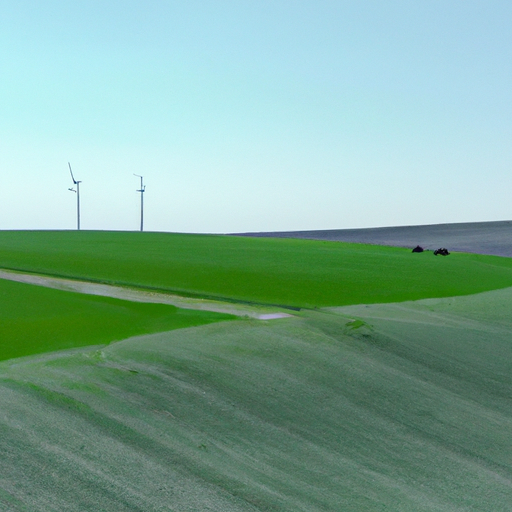
The Importance of Understanding Wind Patterns for Sailing
Understanding the Direction of the Wind
The Importance of Understanding Wind Patterns for Sailing
Sailing has long been a popular recreational activity, as well as an essential mode of transportation for many civilizations throughout history. Whether you are a seasoned sailor or a novice, understanding wind patterns is crucial for a successful and enjoyable sailing experience. Wind direction and strength can greatly impact your ability to navigate, control your boat, and reach your desired destination. In this article, we will explore the importance of understanding wind patterns for sailing and how it can enhance your overall sailing experience.
First and foremost, understanding wind patterns allows sailors to effectively plan their routes and navigate the open waters. By knowing the prevailing wind direction in a particular area, sailors can determine the most efficient course to take. For example, if the prevailing wind blows from the north, sailors can plan their route to take advantage of this wind direction, allowing them to sail downwind and reach their destination more quickly. On the other hand, if the wind blows from the south, sailors may need to adjust their course accordingly to avoid sailing against the wind, which can be challenging and time-consuming.
Furthermore, understanding wind patterns enables sailors to control their boats more effectively. Different wind directions require different sailing techniques and adjustments to the sails. For instance, when sailing upwind, sailors need to trim their sails in a way that allows the boat to sail as close to the wind as possible. This technique, known as close-hauled sailing, helps the boat maintain its forward momentum and prevents it from being pushed sideways by the wind. Conversely, when sailing downwind, sailors need to adjust their sails to catch the wind from behind, maximizing their speed and harnessing the wind’s power.
In addition to navigation and boat control, understanding wind patterns is also crucial for safety while sailing. Sudden changes in wind direction or unexpected gusts can catch sailors off guard and potentially lead to accidents or capsizing. By monitoring wind patterns and being aware of any changes, sailors can anticipate and prepare for these situations, ensuring the safety of themselves and their crew. Additionally, understanding wind patterns can help sailors avoid areas with strong winds or turbulent conditions, reducing the risk of encountering dangerous situations while at sea.
Moreover, understanding wind patterns can greatly enhance the overall sailing experience. Sailing is not just about reaching a destination; it is also about enjoying the journey and immersing oneself in the beauty of the open waters. By understanding wind patterns, sailors can choose routes that offer the most scenic views or the calmest waters, allowing them to fully appreciate the natural surroundings. Furthermore, being able to harness the wind’s power and sail smoothly through the water can provide a sense of exhilaration and accomplishment, making the sailing experience all the more enjoyable.
In conclusion, understanding wind patterns is of utmost importance for sailors. It allows them to plan their routes, navigate effectively, control their boats, and ensure their safety while at sea. Moreover, understanding wind patterns enhances the overall sailing experience, providing opportunities for adventure, relaxation, and appreciation of the natural world. So, whether you are a seasoned sailor or a novice, take the time to study wind patterns and make the most of your sailing adventures.
How to Interpret Wind Direction for Outdoor Activities

Understanding the Direction of the Wind
Wind direction is an essential factor to consider when engaging in outdoor activities. Whether you are planning a hike, a camping trip, or even a day at the beach, knowing how to interpret wind direction can greatly enhance your experience and ensure your safety. In this article, we will explore the importance of understanding wind direction and provide some tips on how to interpret it accurately.
First and foremost, it is crucial to understand why wind direction matters. The direction from which the wind is blowing can have a significant impact on various aspects of your outdoor activities. For instance, if you are planning a hike, knowing the wind direction can help you determine the best route to take. A tailwind can provide a pleasant push, making your hike easier, while a headwind can slow you down and make the journey more challenging.
Furthermore, wind direction can also affect your safety. For example, if you are camping near a fire, it is crucial to set up your campsite in a way that ensures the wind blows the smoke away from your tent. Similarly, if you are planning a day at the beach, understanding wind direction can help you avoid dangerous rip currents by staying upwind of them.
So, how can you accurately interpret wind direction? One of the simplest methods is to use a wind vane or windsock. These devices are designed to point in the direction from which the wind is blowing. By observing the wind vane or windsock, you can quickly determine the wind direction. However, it is important to note that wind direction can vary at different altitudes, so it is advisable to observe the wind direction at ground level as well as higher up if possible.
Another useful technique is to look for visual cues in your surroundings. For example, if you are near a body of water, such as a lake or a river, you can observe the movement of the water’s surface. Ripples or waves moving in a particular direction can indicate the wind direction. Similarly, you can also look at the movement of trees, flags, or even smoke from chimneys to get a sense of the wind direction.
In addition to visual cues, you can also rely on your sense of touch to determine wind direction. By simply facing into the wind, you can feel the direction from which it is blowing. This method is particularly useful when there are no visual cues available, such as in an open field or on a mountaintop.
Lastly, it is important to remember that wind direction can change throughout the day. Therefore, it is advisable to periodically check the wind direction, especially if you are engaging in activities that are sensitive to wind conditions, such as sailing or paragliding. By staying aware of any changes in wind direction, you can adjust your plans accordingly and ensure a safe and enjoyable experience.
In conclusion, understanding wind direction is crucial for outdoor enthusiasts. By knowing how to interpret wind direction accurately, you can plan your activities more effectively, enhance your safety, and make the most of your time outdoors. Whether you rely on wind vanes, visual cues, or your sense of touch, being aware of the wind direction will undoubtedly contribute to a successful and enjoyable outdoor adventure.
Understanding Wind Patterns for Weather Forecasting
Understanding the Direction of the Wind
Wind is a natural phenomenon that plays a crucial role in our daily lives. From influencing weather patterns to affecting our comfort levels, wind is a force that cannot be ignored. To better understand wind and its impact, it is essential to comprehend the direction in which it blows. By understanding wind patterns, we can make more accurate weather forecasts and prepare ourselves for any potential changes in the atmosphere.
Wind direction refers to the compass direction from which the wind is blowing. It is typically measured in degrees, with 360 degrees representing a full circle. The most common way to determine wind direction is by using a wind vane, which points into the wind and indicates the direction. However, wind direction can also be determined by observing the movement of clouds, smoke, or even the behavior of animals.
One of the primary factors that influence wind direction is the rotation of the Earth. Due to the Earth’s rotation, winds tend to flow from high-pressure areas to low-pressure areas. This movement creates a pattern known as the Coriolis effect, which causes winds in the Northern Hemisphere to deflect to the right and winds in the Southern Hemisphere to deflect to the left. This deflection is why wind patterns differ between the two hemispheres.
Another significant factor that affects wind direction is the presence of geographical features such as mountains, valleys, and bodies of water. These features can alter the flow of wind, causing it to change direction or speed. For example, when wind encounters a mountain range, it is forced to rise, resulting in cooler temperatures and potentially causing precipitation on the windward side. On the leeward side, the wind descends, creating warmer and drier conditions.
Understanding wind direction is crucial for weather forecasting. Meteorologists use wind patterns to predict the movement of weather systems, such as storms and fronts. By analyzing the direction of the wind, meteorologists can determine the potential path and intensity of these weather systems, allowing them to issue accurate forecasts and warnings.
Transitional phrase: In addition to weather forecasting, wind direction also plays a vital role in various other fields. For example, in aviation, pilots rely on wind direction to plan flight routes and estimate travel times. By taking advantage of tailwinds, pilots can reduce fuel consumption and increase efficiency. Similarly, sailors use wind direction to navigate their vessels, adjusting their sails to take advantage of favorable winds.
Transitional phrase: Wind direction also has a significant impact on our daily lives. For instance, wind direction affects our comfort levels, especially when it comes to outdoor activities. A gentle breeze blowing from a favorable direction can make a hot summer day more bearable, while a strong gust of wind blowing in the wrong direction can make it difficult to enjoy outdoor activities.
In conclusion, understanding the direction of the wind is essential for various reasons. From weather forecasting to aviation and sailing, wind direction plays a crucial role in many aspects of our lives. By comprehending wind patterns and their influences, we can better prepare ourselves for changes in the weather and take advantage of the wind’s benefits. So, the next time you feel a breeze on your face, take a moment to appreciate the direction from which it is blowing and the impact it has on our world.






